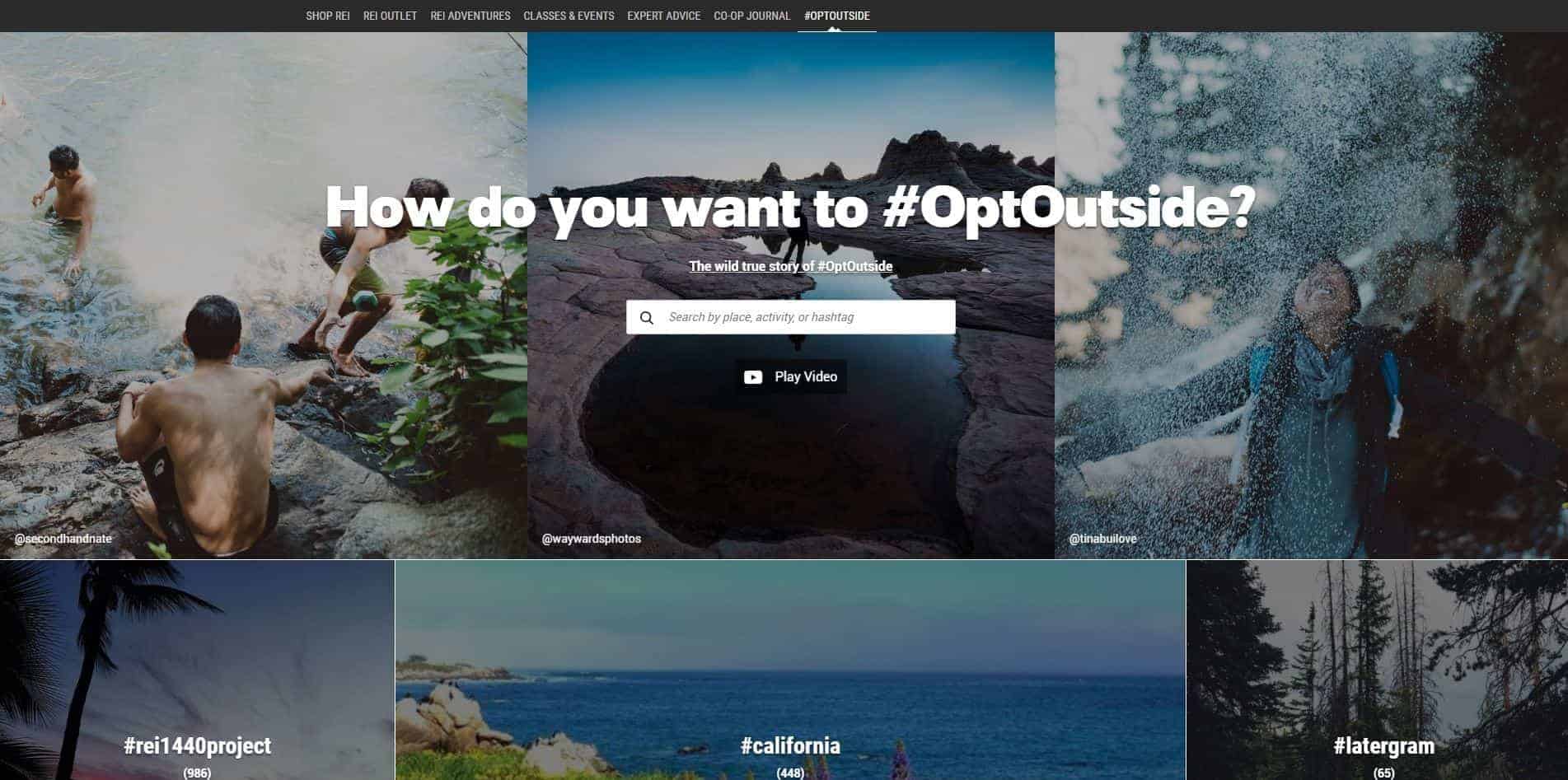
3 Disruptive Marketing Examples and Why They Work

When competition for your products and services surrounds you on every side, it can be exhausting to find new ways to market your business. Perhaps the popular forms of marketing aren’t doing enough for your company and you are looking for something new to pique the interest of potential customers. What you’re looking for is disruptive marketing (aka disruptive advertising), and it can completely change the advertising game.
What Is Disruptive Marketing?
Similar to the way disruptive innovation turns existing business models on their heads, disruptive marketing looks at the practices and techniques that everyone is using, the platforms they’re on, the things they’re saying, and does the opposite. The definition of disruptive marketing is to always seek out the new, cutting-edge way of doing something, taking advantage of social platforms and new technologies along the way.
Beyond that, disruptive advertising seeks to break through the noise of modern marketing and truly hit home with customers. It recognizes the invisible needs of a target market and invests in techniques that are being ignored by competitors.
Why Disruptive Marketing Is Key
You’re probably familiar with the term “Disruptive Innovation.” If not, here’s a quick definition: In short, this phrase refers to the practice of newcomer businesses examining an established industry to find the customers that are being neglected because they are less profitable than other groups. The newcomers then meet the needs of these neglected customers and steal them away from established businesses by offering the products or services in question, often for less money.

A classic example of disruptive innovation is the rise of Netflix and how they challenge the livelihood of video rental stores and cable TV. If you go back a little further, Apple Music knocked down Sony, the king of music, and Apple wasn’t even created to be in the music industry. You can probably think of numerous other disruptive advertising examples. This method can get quick results with staggering increases in sales and brand awareness, and it’s the foundational principle of disruptive advertising.
Disruptive Marketing Examples
Disruptive advertising can bring dramatic results when effective, and there are countless successful examples. Many disruptive marketing techniques have yet to be discovered, so there is plenty of potential for future businesses looking for an edge. However, here are three of the best disruptive marketing techniques and examples that you can use and apply to your company’s strategy.
1. Take a Stand
Black Friday is an American tradition, and there probably aren’t many people you know that don’t participate in this post-Thanksgiving shopping event. In 2016, over 100 million people shopped on Black Friday. For some context, that’s nearly three times as many people as the population of California.
Million Shoppers
So why on earth would a national brand urge customers to say no to the yearly shopping tradition? To find the answer, dig deeper into the #OptOutside campaign from REI.
REI is an outdoor brand that provides gear, clothing and supplies for a wide range of activities and events. Their branding strives to be personal and connects with customers through a common love of nature and exercise. In 2015, REI urged customers to go enjoy outdoor activities instead of participating in Black Friday. The campaign included an intro video and a website where people could (and still can) post pictures of their outdoor adventures.
With the website and the tradition of skipping Black Friday still going three years later, this is still a very relevant example of disruptive marketing.

Why It Works
Though it might seem the exact opposite, REI’s campaign was smart from a sales perspective. By encouraging people to forgo Black Friday, though people won’t be shopping at REI’s stores, they, in theory also wouldn’t be shopping at their competitor’s stores.
Also, by urging customers to #OptOutside, not just on Black Friday but year-round, REI creates more demand for their products. It promotes the brand and develops their company values, which helps customers connect even more with their business.
Beyond these reasons, REI also accomplished something very indicative of disruptive marketing campaigns by connecting with their customers, utilizing user-generated content, and taking a stand against an established tradition. The ground they’ve covered in both sales and brand awareness makes this an astonishing disruptive marketing example.
How To Apply It
This disruptive advertising technique doesn’t work for every situation, but it can succeed when used wisely. Think about big events that your business participates in, whether planned or unplanned, and decide if taking a stand against the norm can get big results. Standing up for something can develop your brand image and help customers connect with you. However, be sure that whatever move you make is smart, ethical and sensitive.
2. Change the Conversation
Even more well-attended than Black Friday is the Superbowl. Each year, millions of people tune into this sporting event, and each year, millions of dollars are spent on TV advertisements that air during the game. Ad costs can be higher than $5 million for a 30-second spot, yet big-name companies such as Pepsi and Budweiser, continue to pay for these ads.
Swedish car manufacturer Volvo decided to take a different approach to Super Bowl advertising and offered an excellent example of disruptive marketing at the same time. During the Superbowl in 2015, Volvo told customers to tweet at them with the hashtag #VolvoContest whenever they saw a commercial for another car company. In the tweet, they encouraged users to make a nomination for one of their loved ones to win a Volvo automobile.
Volvo called the campaign “The Greatest Interception Ever,” which speaks to the way they managed to shift the conversation away from their competitors. Every time customers saw a commercial for a different car brand, they immediately thought of Volvo and interacted with them instead. Not only did this disruptive marketing tactic become a win for Volvo, but it was also a huge blow to competitors.
According to a video recapping the campaign and its results, Volvo sustained engagement throughout the Super Bowl on Twitter. Even more importantly, Volvo sales of the XC60 model increased by 70% in the month after the Super Bowl.
Why It Works
This campaign was disruptive and successful on multiple levels. In one sense, Volvo saw what other car companies were doing (spending millions on Super Bowl advertising) and did something completely different. This alone makes their interception campaign disruptive. Additionally, they changed the conversation to one of emotional connection by putting the spotlight on Super Bowl viewers and the people most important to them. This disruptive marketing strategy and the results it gained will benefit them for years to come.
How To Apply It
Changing the conversation happens when you think outside the box. Instead of following the traditional advertising methods, think of how you can engage the audience in an original way. Many disruptive advertising strategies that change the conversation use emotional connections to gain traction with followers. This can be done in a variety of ways, whether through social media, videos or printed advertising.
3. Harness Cutting Edge Technology
Disruptive marketing doesn’t have to use innovative technology, but it often does. When a company takes advantage of a new, exciting technology before their competitors, they have a chance to position themselves as an industry-leading brand. L’Oreal, a leader in digitally competent hair care brands, has a great recent disruptive marketing example of doing this.
In January of 2018, L’Oreal released an updated app that uses artificial intelligence to show users how they would look in different L’Oreal hair colors. Many people hesitate to dye their hair because they don’t know how the color will look on them. Many factors such as complexion and eye color can affect how a certain hair color will look on a person.
L’Oreal solved this insecurity with technology. With a few buttons, the viewers’ hair can magically transform into any color. The realistic app gives customers confidence in the colors they choose and offers a quick method to schedule an appointment.
Using an app by itself isn’t necessarily disruptive, as multiple companies, from Suntrust to Great Clips, have their own mobile apps. But creating a game-like app that puts the power of artificial intelligence at your customers’ fingertips is.
Why It Works
With one app, L’Oreal is able to provide a personalized beauty experience to millions of customers. Not only that, but launching an augmented reality app uses cutting-edge technology and takes into account the importance of mobile, which is one of the 10 disruptive marketing trends identified in Geoffrey Colon’s book, “Disruptive Marketing: What Growth Hackers, Data Punks and Other Hybrid Thinkers Can Teach Us About Navigating the New Normal.”
How To Apply It
Do you have a few ideas you think could improve your customers’ buying experience with technology? Get your programmers and technology experts started. Many competitors are intimidated by technology, which means you could get an immediate edge with some innovative proposals.
Disruptive Marketing Works
In a marketing landscape where customers are bombarded with the same or similar marketing tactics and messages over and over, disruptive marketing just might be one of your best chances to really reach your customers and make a lasting impression on them. These disruptive advertising examples may be from large and well-known brands, but they can still be applied to just about any company. In fact, they can be the springboards of new and undiscovered disruptive marketing campaigns that your company creates.
Let Us Help You Disrupt the Market
SEO blog writing services are a form of disruptive marketing. See how we can change the playing field for your business.
- 7 Ways to Blog Faster and Better Without Losing Your Mind - December 16, 2023
- The Business of Blogging: How To Make Money With Profitable Posts - December 9, 2023
- How To Do YouTube Content Marketing - December 8, 2023

